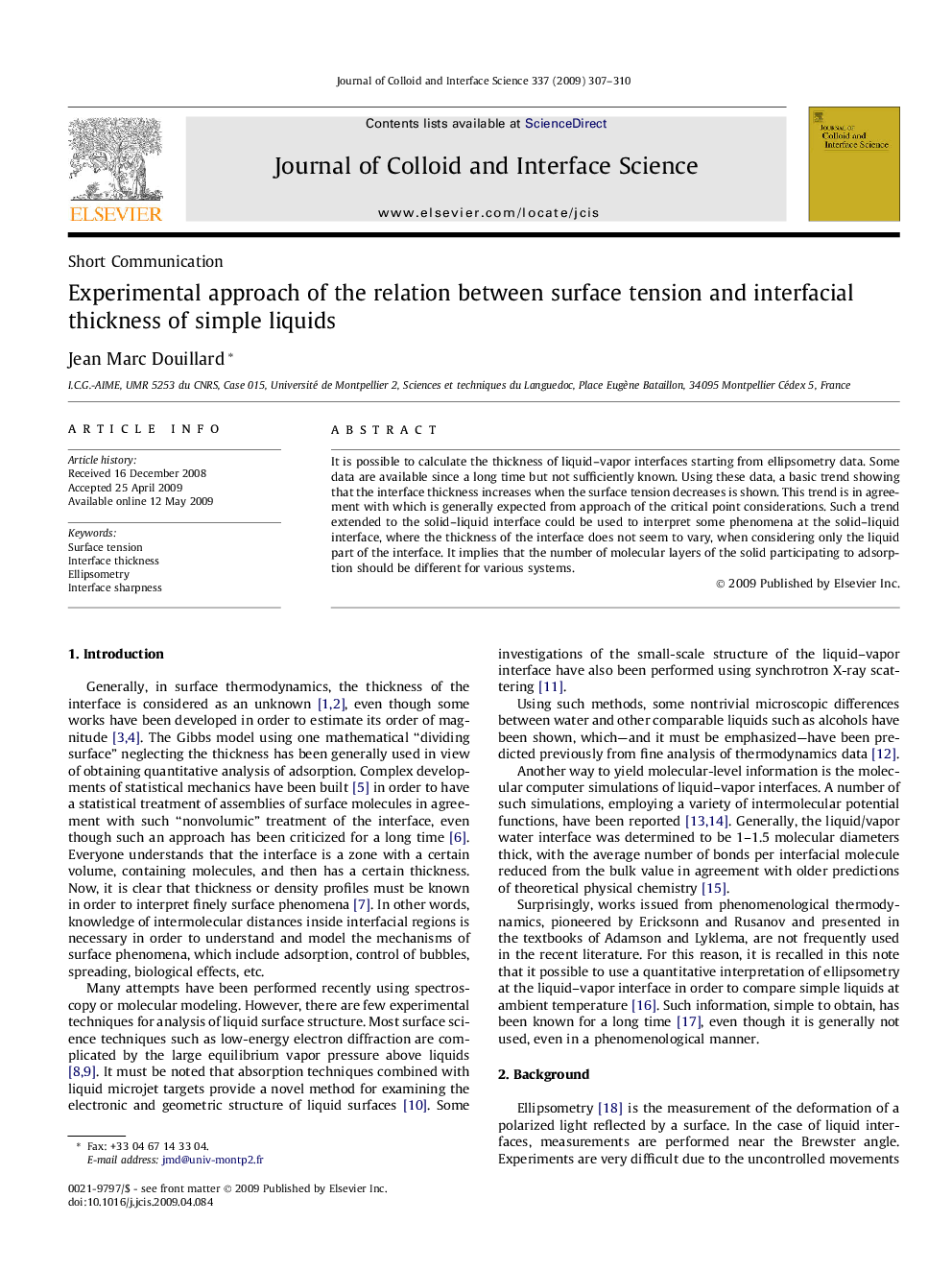| Article ID | Journal | Published Year | Pages | File Type |
|---|---|---|---|---|
| 610694 | Journal of Colloid and Interface Science | 2009 | 4 Pages |
It is possible to calculate the thickness of liquid–vapor interfaces starting from ellipsometry data. Some data are available since a long time but not sufficiently known. Using these data, a basic trend showing that the interface thickness increases when the surface tension decreases is shown. This trend is in agreement with which is generally expected from approach of the critical point considerations. Such a trend extended to the solid–liquid interface could be used to interpret some phenomena at the solid–liquid interface, where the thickness of the interface does not seem to vary, when considering only the liquid part of the interface. It implies that the number of molecular layers of the solid participating to adsorption should be different for various systems.
Graphical abstractVarious values of the thickness of the liquid–vapor interface deduced from ellipsometry compared with the surface tension for a set of pure liquids.Figure optionsDownload full-size imageDownload high-quality image (47 K)Download as PowerPoint slide
